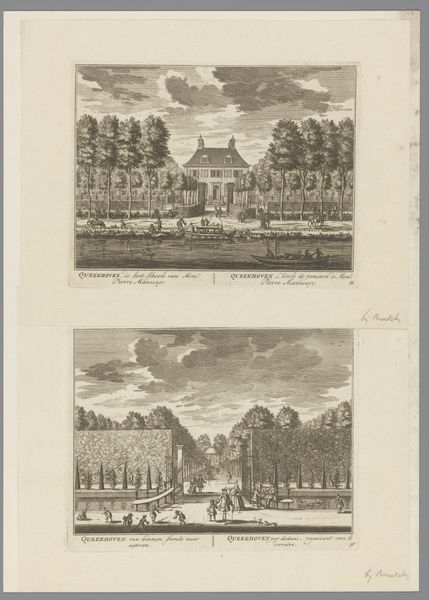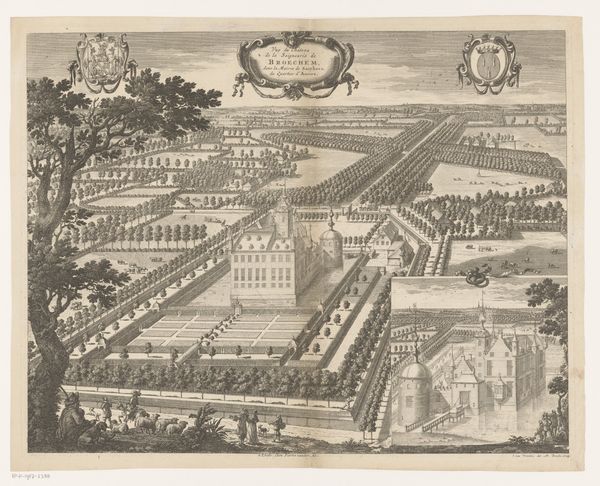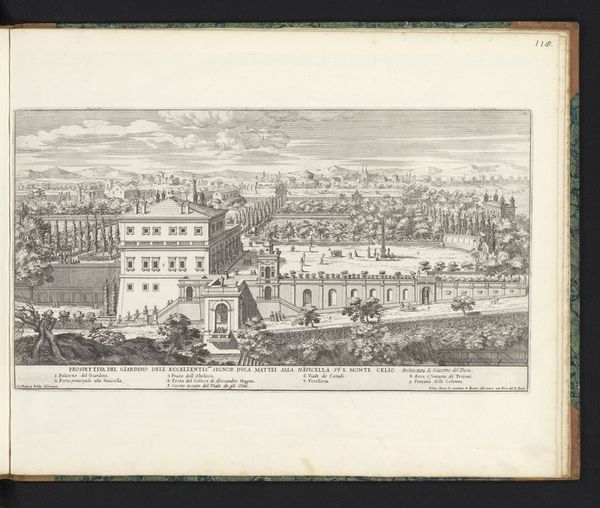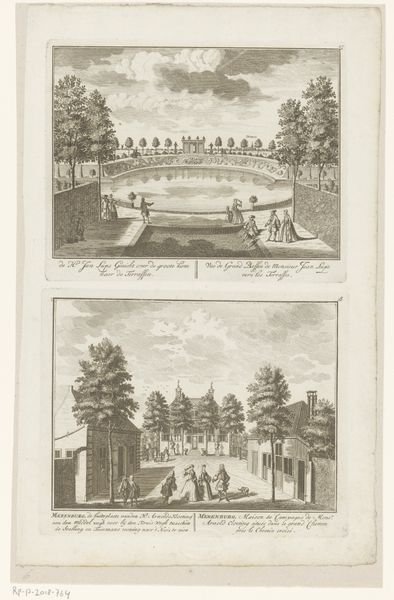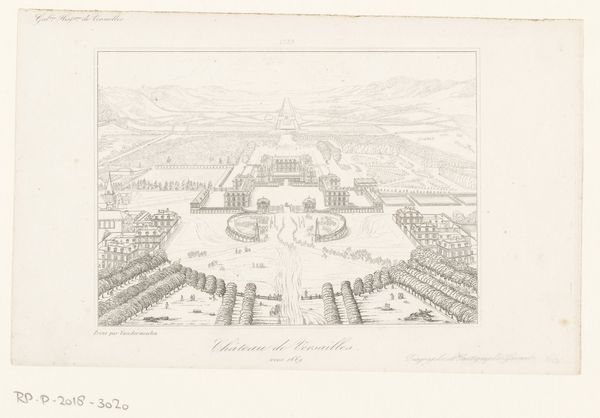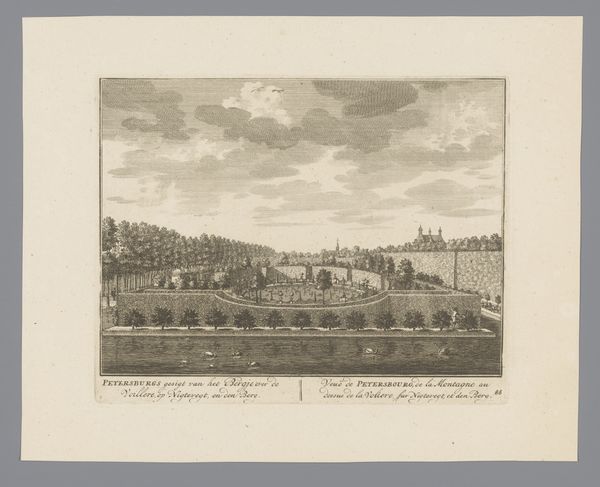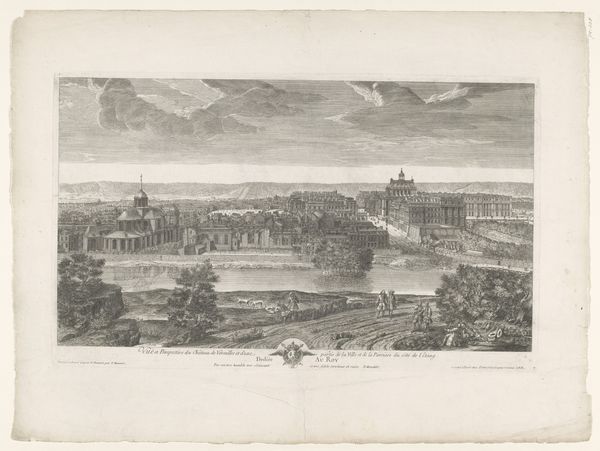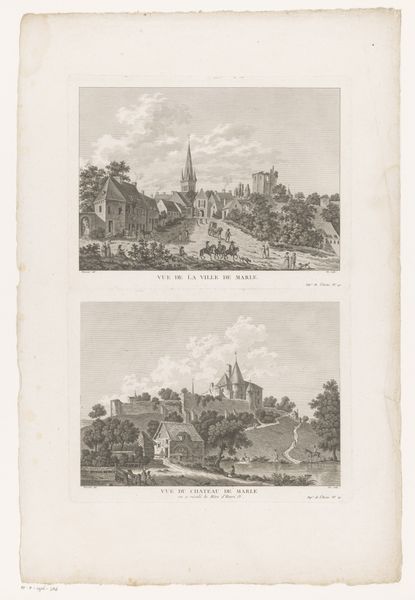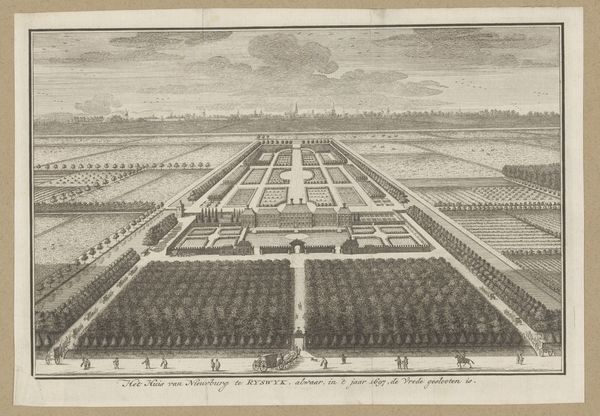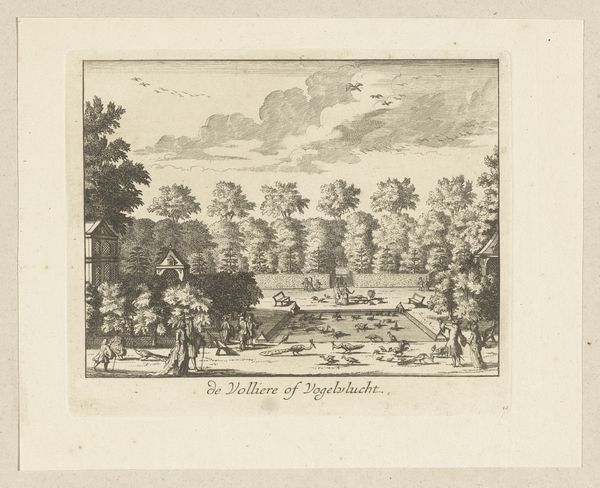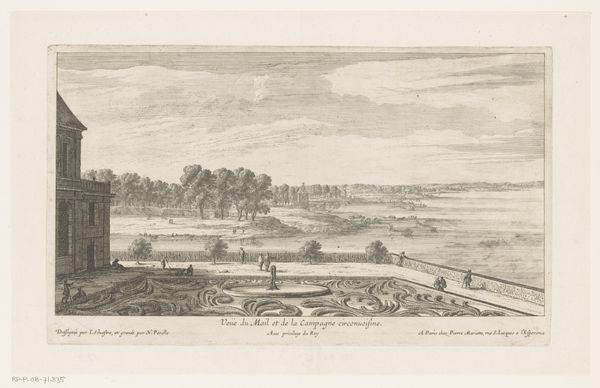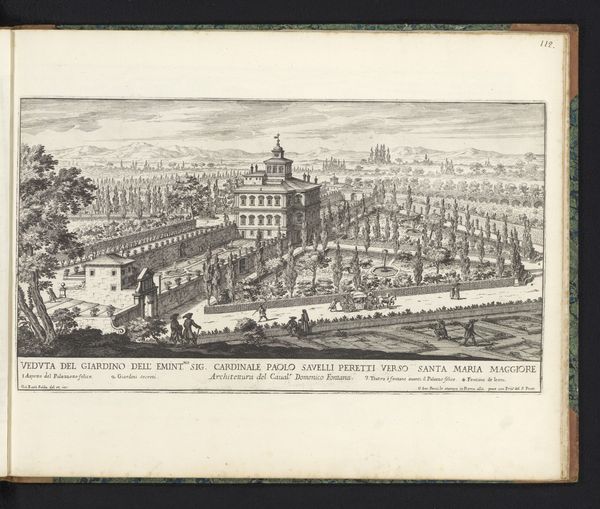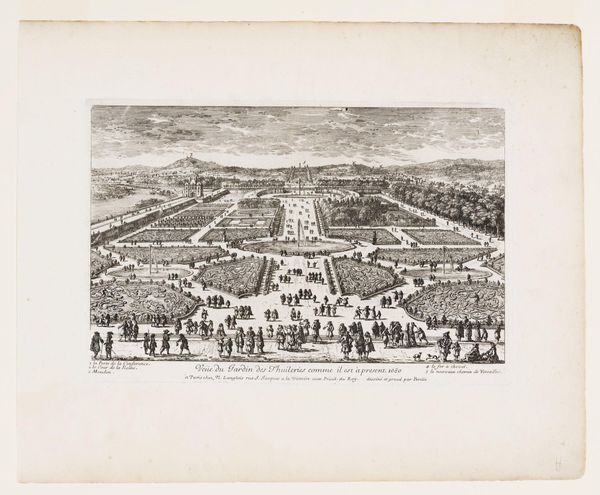
Formele tuinen bij Kasteel Heemstede / Grote vijver bij Kasteel Heemstede / Grot vanuit de galerij gezien / Grot in de tuin van Kasteel Heemstede 1706 - 1719
0:00
0:00
print, engraving
#
baroque
# print
#
landscape
#
geometric
#
cityscape
#
engraving
Dimensions: height 535 mm, width 752 mm, height 169 mm, width 212 mm
Copyright: Rijks Museum: Open Domain
Curator: These meticulously crafted images offer us a glimpse into the formal gardens of Kasteel Heemstede, brought to life between 1706 and 1719 by Isaac de Moucheron. Editor: The formality strikes me immediately. There’s a sense of ordered beauty, but it also feels almost…oppressive, a rigid control of nature. Curator: Absolutely, and that control is a key element in understanding these Baroque landscapes. De Moucheron’s prints weren’t simply aesthetic exercises; they served as representations of power, demonstrating the ability of the aristocracy to reshape their environment to their will. Think about the socio-political implications. Land ownership, the ability to manipulate nature on this scale—these were statements of dominance. Editor: So, these gardens are more than just beautiful places, they're symbols within a larger framework of social and economic structures? Was there some effort to show the “public role of art”, to remind the public, to whom these statements of dominance were intended? Curator: Precisely. De Moucheron created these engravings to circulate, reaching a broad audience. They were often purchased by other nobles eager to emulate such grandeur or displayed to impress visitors. It solidified status, created social distinction through idealized depictions, and shaped perceptions of those with means and authority. It normalized the structure. Editor: And the emphasis on geometry reinforces this sense of control, doesn't it? The perfectly aligned trees, the precisely shaped flower beds…it’s the antithesis of a wild, untamed landscape. Are there writings or other period sources reflecting that feeling of power you are suggesting? Curator: We have extensive historical records of garden design and landscaping practices from that era which speak to these values directly, detailing how nature should be sculpted and ordered to reflect both reason and wealth. Accounts of court life highlight the ways these environments functioned as stages for social performance and the explicit purpose they served. Even something like a perfectly still reflecting pool acted as a surface of potential that the aristocracy could leverage. Editor: It's fascinating to consider the garden not just as a garden, but as a meticulously constructed argument. Makes me wonder about the human cost of such orchestrated artifice. Curator: A potent point. Considering this artwork today compels us to confront power dynamics woven into our environments and invites ongoing dialogues regarding what aspects of those inherited structures of society are worth upholding, opposing, and evolving toward something better. Editor: And to be critical about it while we ponder over who decides the accepted value structures within this imagery, its architecture, and landscaping as we study this print of Heemstede today.
Comments
No comments
Be the first to comment and join the conversation on the ultimate creative platform.
